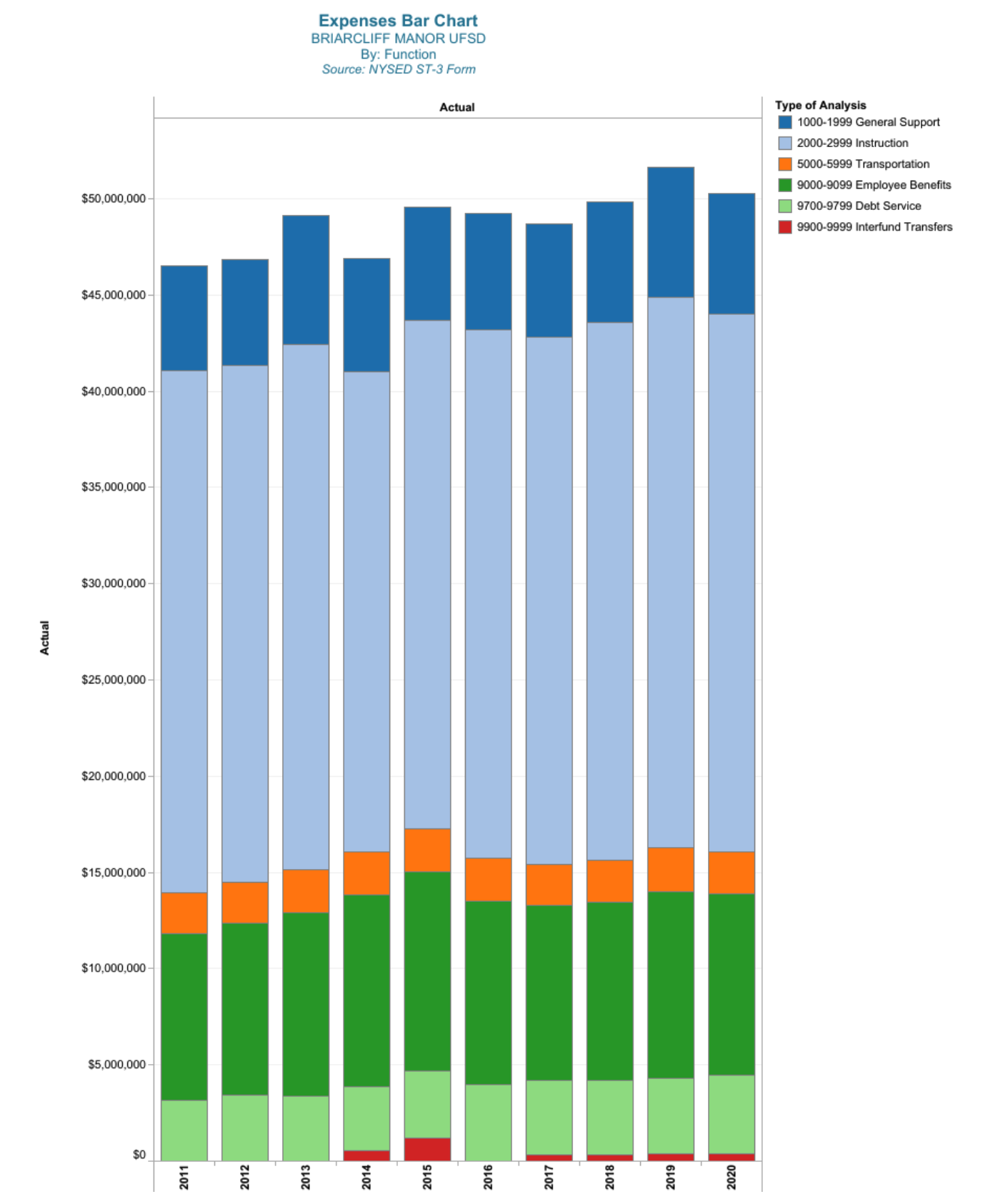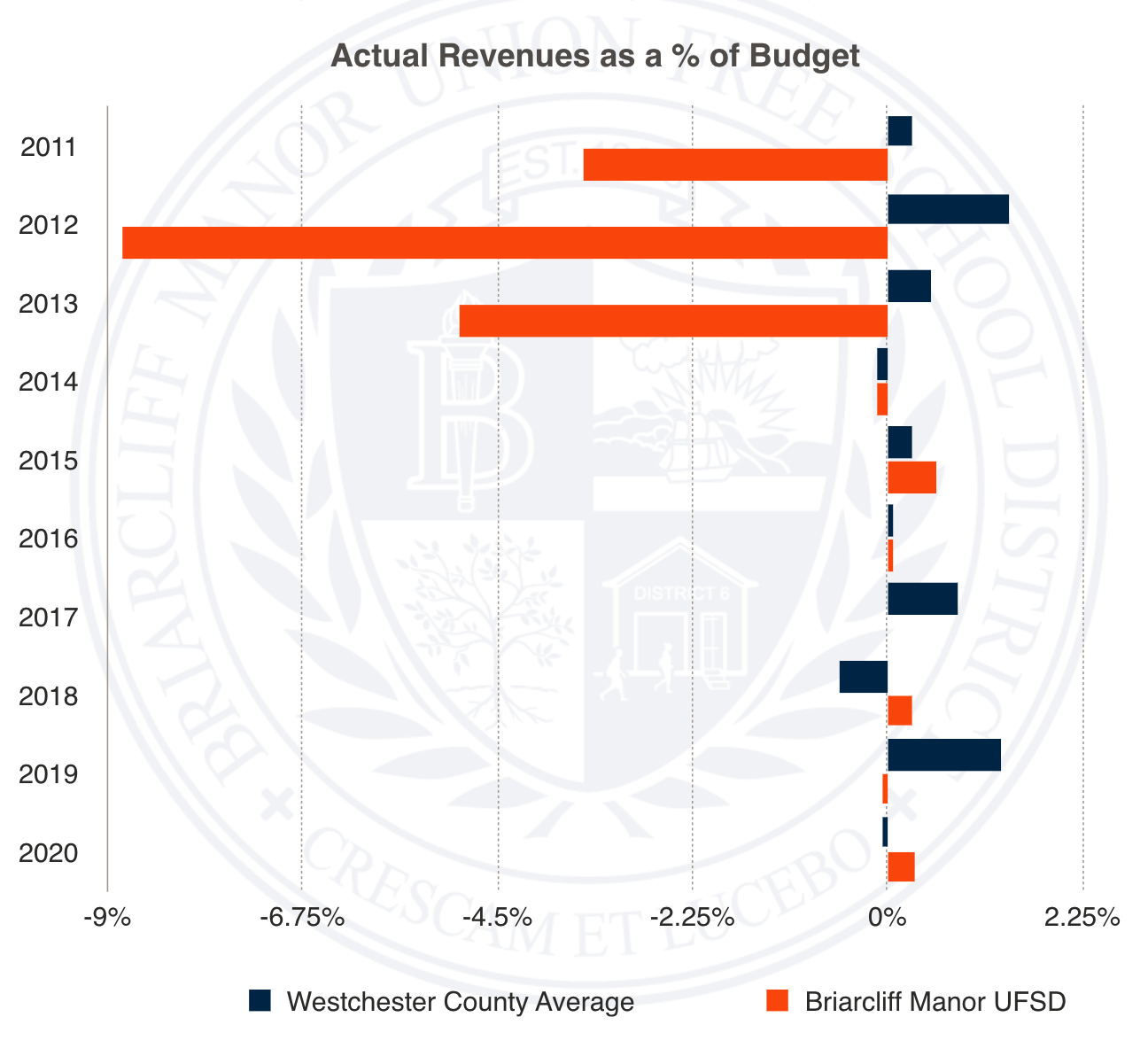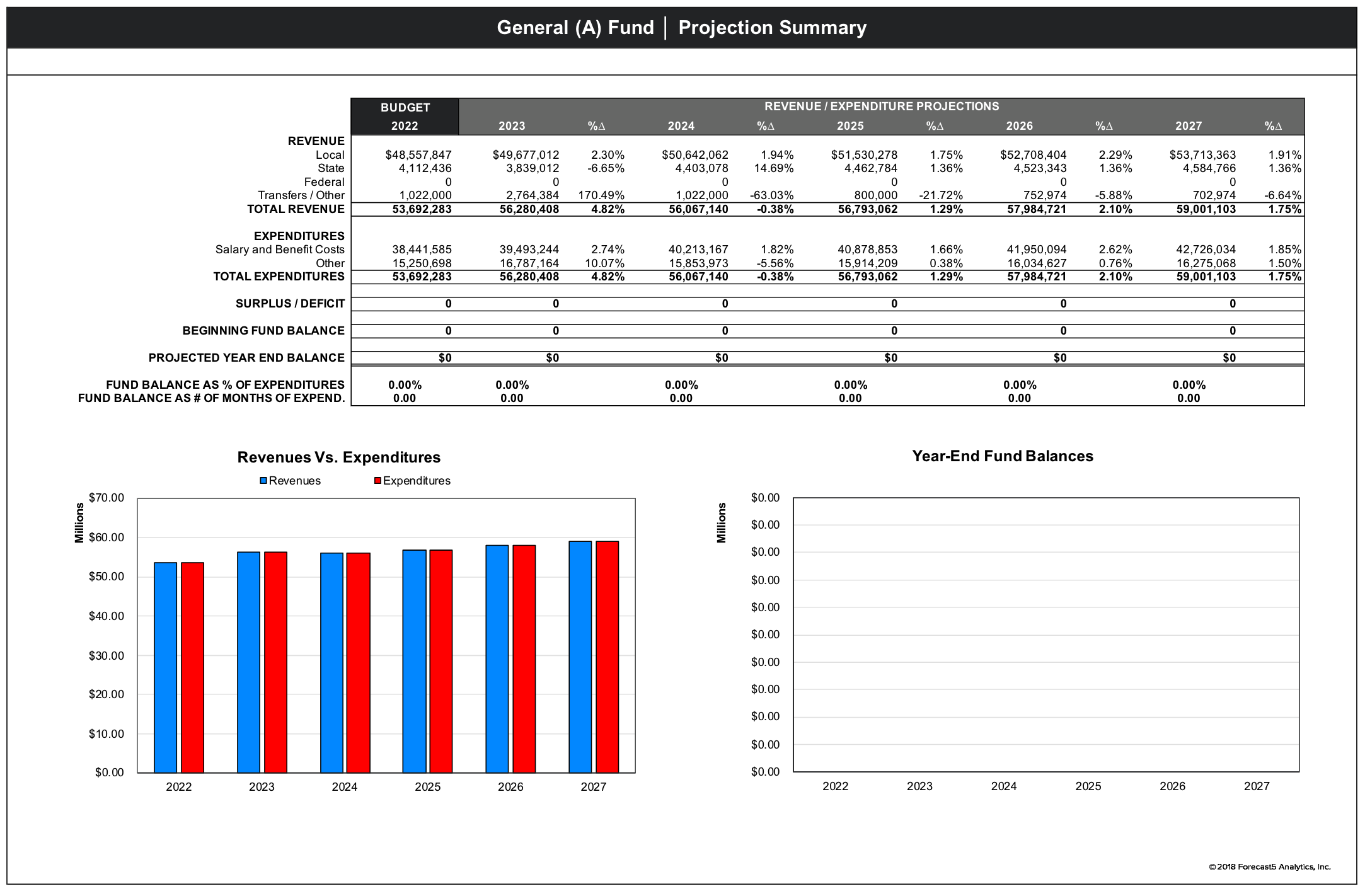Long-range Financial Planning at Briarcliff Manor Union Free School District
How Briarcliff Manor’s Assistant Superintendent for Finance and Operations uses Frontline Analytics to keep the budget balanced and on track.
At a Glance:
- Location
- Briarcliff Manor, NY
- K-12 Enrollment
- 1,358
- Employees
- 283
- Annual Budget
- ~$56 million
Frontline Solutions Used:
- Financial Planning Analytics
- Budget Management Analytics
- Comparative Analytics
John Brucato is as passionate about school business as you can get. He’s the Assistant Superintendent for Finance and Operations at Briarcliff Manor Union Free School District in Westchester County, New York, serves on the Association of School Business Officials (ASBO) New York Board of Directors, and hosts a podcast focused on the school business profession. “I very much have a passion for school business operations and school finance and I’m trying to give back in every way possible.”
John has worked in this field for eight years, including three at Briarcliff Manor. It’s a small district in an affluent area, and because of the wealth of opportunities they can offer students in areas like academics, sports, theater, and music, John said many students stay in touch years later, grateful for how well the district prepared them for life after high school.
Financial Complexity
John says that because the district is primarily funded by property taxes in a locale with fairly high tax rates, it adds complexity to the financial planning process. “Dealing with a budget from year to year is one thing, but having a macro view and a long-term anticipation of what’s to come is even more complex and more important because we are subjugated to levying taxes as our main source of revenue.”
The community is supportive of the district — but no one enjoys tax hikes, and so the leadership at Briarcliff Manor must be strategic, calculated, and specific about how they build their revenue budget.
Additionally, residing in New York brings a level of unpredictability in state funding and districts are required to pass an annual budget vote, where community members actively vote to pass or not pass the district’s budget. “We don’t always know what’s to come year to year. When we take a longer term look at our finances, we have to be conservative — not overly conservative — but really cautious about what we can anticipate moving down the road.” This means having a solid 3-5-year look at their finances and making sure the decisions the district makes now leads to strong financial footing in the future.
Needed: Easy-to-Understand Data
When John stepped into the field of school business eight years ago at another district, he inherited a long-range plan: a couple of spreadsheets accompanied by some basic narrative and assumptions. “It wasn’t a document that was easily consumable by me as a school finance official, so I knew it wasn’t going to be easily consumed by the Board of Education or the public in our community.” John knew he needed a way to plan and present a budget and a financial plan in a way that would be easily understood by anyone in the community.
He set out to find a tool that would help him out and had two primary criteria. First, it had to make data simple: “I needed a tool that was able to pull up and manipulate data the way I needed to present it to the consumer. The way we look at data from a school finance lens is very different than how the Board of Education looks at it, and how the community at large looks at it. We’re looking at the same data. It just needs to be presented in a much easier way.”
“I needed a tool that was able to pull up and manipulate data the way I needed to present it to the consumer.”
Second, he wanted something that would help him aggregate publicly available data. “There are so many individual data points that are floating out there, and it’s all publicly accessible. But [accessing] that data is very difficult the way it’s presented without having something to aggregate all that data, especially from the state. The state produces and collects so much data on an annual basis. We weren’t leveraging it in a meaningful way.”
A Tool that Works
Frontline Analytics met John’s needs, and he used the system for several years at his prior district before making the move to Briarcliff Manor. It even helped him get the job: John used Frontline’s Financial Planning Analytics and Comparative Analytics tools to get a sense of the district’s finances before he ever took the role. “I was able to dive in and look at their financial history and all these things that we have to consider as business officials to say, ‘Is this a challenge that I want to take on?’” The interview process involved compiling a financial health analysis of the district. “I was able to leverage those tools to put a polished presentation together and articulate what I thought the challenges were going to be for the 2021 school year.”
Building a Long-range Financial Plan
The long-range financial plan that John and his team put together isn’t just a hoop to jump through. It’s a living document, guiding daily decision-making. Every January, John takes a first pass at the plan alongside the coming year’s budget. These documents always go together, one showing the decisions that are being made in the short term, and the other showing how those decisions are expected to impact the future.
John starts from the prior year’s model, reworking the assumptions based on how the current budget is performing. Frontline Analytics helps him craft a plan that those without a finance background can digest. Compared to using spreadsheets, it saves him a lot of time: “I would easily say I save maybe 50% of my time, because I was going to so many individual websites — the comptroller’s website, the New York State Education Department, you name it. I was pulling individual data points and having to put that into a digestible format for me, and then turning that into something that the layperson would be able to understand. But now, I’m able to access that same data from one single site, which is amazing because I’m not scouring the web trying to find the data. It’s all pulled into one dashboard for me, and I can then either run reports directly out of that tool or download the raw data.”
“Now, I’m able to access that same data from one single site, which is amazing because I’m not scouring the web trying to find the data. It’s all pulled into one dashboard for me, and I can then either run reports directly out of that tool or download the raw data.”
The plan includes data to show historical financial performance, historical student performance, how Briarcliff Manor compares to other districts in the county, how close the budget is to their actuals, and other relevant information. It goes through three or four iterations each budget cycle. Each time, John presents the plan to the board and the community and uses the feedback he receives to tweak the plan accordingly. Frontline Analytics helps him generate visuals to tell the story in a way the board understands. “It just makes it that much better because we all know we’re all speaking the same language — even though prior to that we were all looking at the same data but may have been speaking different languages.”

Comparing to Prior Years and Other Districts
One theme throughout Briarcliff Manor’s budgeting process is that context matters. When crafting the plan, John finds it helpful to look at trends across prior years, using Frontline’s Comparative Analytics. “There are a lot of line charts, graphs, and I create my own custom charts based on raw data that I can pull out of Comparative Analytics, which is great because I believe a long-range financial plan shouldn’t just be looking into the future. Our plan shows the context of where we’ve been to really tell a story and to provide an understanding of why we are making the decisions we are today and how it’s going to affect us in the future.”
“Our plan shows the context of where we’ve been to really tell a story and to provide an understanding of why we are making the decisions we are today and how it’s going to affect us in the future.”
Additionally, John also uses Comparative Analytics to see how his district’s financial performance stacks up to other districts in Westchester County. How close are Briarcliff Manor’s budgeted expenditures to their actual expenditures, and how does that ratio compare to other districts in the county? This, he said, is key to keeping community buy-in. “When we do a comparison of Briarcliff and the Westchester County average, we’re performing really well. We’re not generating crazy surpluses, we’re really responsible with taxpayer funds, and that’s the message we’re trying to get across, because we know our community is very sensitive to any kind of increase in taxes.”

Board and Taxpayer Communication
Don’t envision a financial plan that’s all charts and graphs. Even a bar chart may be open to interpretation, and John strives for clarity and understanding. “My plan is more narrative than it is other data points. My audience probably isn’t going to be other school business officials, it’s going to be taxpayers, right? The plan itself has a lot of narrative to contextualize the data that’s around it. I think we’ve done a nice job in providing context in a text format, but then fitting in graphs and charts to really back up the story.”
The combination of visuals and narrative enables John to break down complex ideas and present them in a simple format.
A Balanced Budget
One big win John recently scored was coming up with a plan that projects a balanced budget for the next five years and at the same time doesn’t exceed the tax levy limit in New York. That may not sound difficult, but John said it would have been impossible without Frontline Analytics. The system allowed them to look at their historical data in a high level of detail, and the tax cap calculator built into the New York State models in the system enabled them to craft a plan that works.
“If it weren’t for the analytics tool allowing us to get very specific in our account codes and how we calculate our potential tax levy limit calculations in the future, we wouldn’t have been able to present such a balanced budget for the next five years.”

Data to Support Student Achievement
Although the business office may not be the same people working directly in the classroom every day, John knows his office is vital to the mission of the district. “It allows us to shepherd the resources where they’re needed….We’re providing the operational support and the budgetary support to make sure that the students and staff have the resources they need to succeed.”
Other departments also use Comparative Analytics to monitor student performance data, test scores, enrollments, demographics. They can aggregate the data and compare to previous years or other schools in the county. Building administrators can also use the system to make decisions for their schools.
Whether used to inform student programs or to build a budget and a financial plan, data is vital to what Briarcliff Manor does. John summed up how Frontline Analytics helps them use it to the fullest effect:
“It has completely improved my experience of being able to pull data, use data, and articulate data to my board of education and my community. Without these tools, I’d be spending way more time than I feel I need to be able to put together comprehensive plans for our district, for our students, for our staff.”
Data-based Decision-support Software for Schools
See how Frontline Analytics can help your district make more strategic decisions by bringing your data together into easy-to-understand visual dashboards — and communicate your vision to your board, stakeholders, and community.